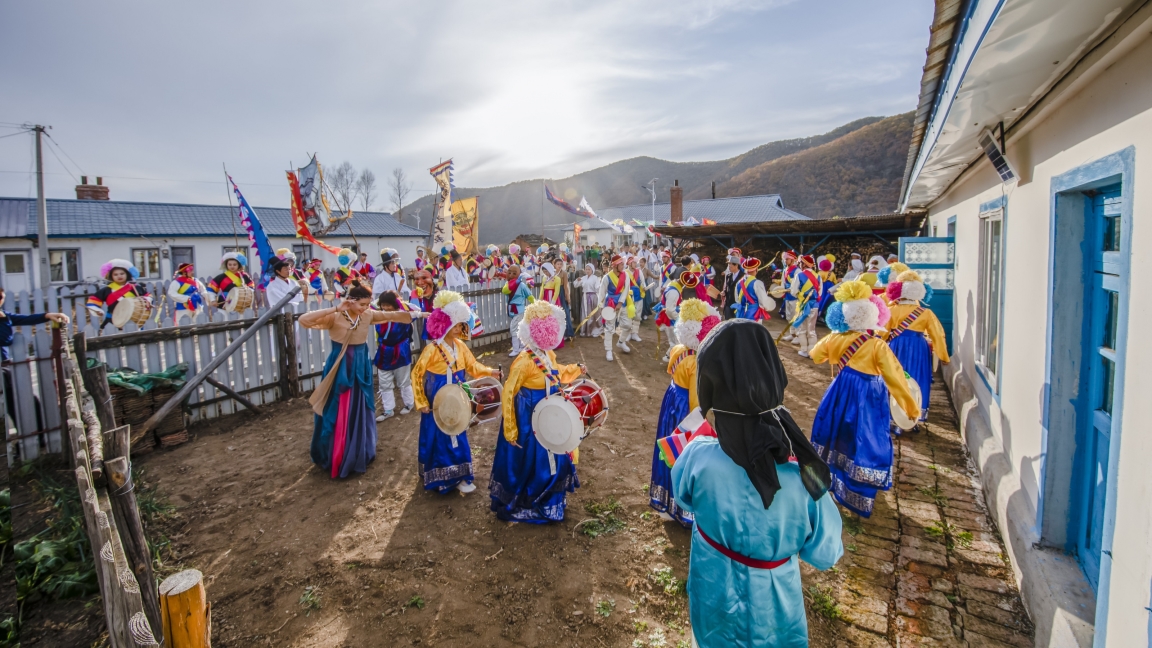
Editor's note:
The United Nations has officially designated 44 Chinese traditions as world cultural heritage. This series examines how each of them defines what it means to be Chinese.
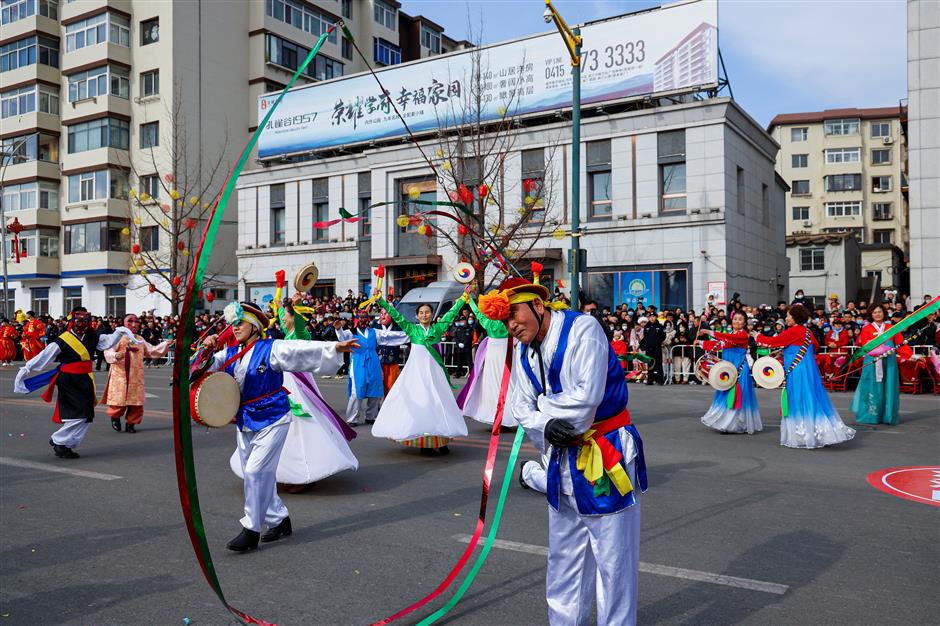
The farmers’ dance of the Korean ethnic group energizes a holiday crowd in Dandong, northeast China's Liaoning Province.
In northeast China's Jilin, Heilongjiang and Liaoning provinces, the sounds of drums and flutes still echo through the mountains and villages. At the center of these performances is the farmers' dance of the country's Korean ethnic group.
The centuries-old tradition continues to thrive in fields, at festivals, on community stages and national television.
The United Nations Educational, Scientific and Cultural Organization (UNESCO) added the farmers' dance to its Representative List of the Intangible Cultural Heritage of Humanity in 2009. It is the only dance form from China to hold this recognition.
The dance reflects the life, labor and beliefs of the Korean ethnic group, many of whom settled in northeast China in the 19th century.
The farmers' dance originated as a way to honor the earth and seek blessings for a bountiful harvest. In traditional performances, villagers offer food and drink to the God of the Land before the music and dancing begin.
Musicians play the oboe-like suona, drums, gongs and bells, which represent thunder, rain, wind and cloud. Dancers mimic farming tasks such as planting seeds, walking ridges and weeding. Movements follow the rhythm of the music, creating a shared act of celebration and prayer.
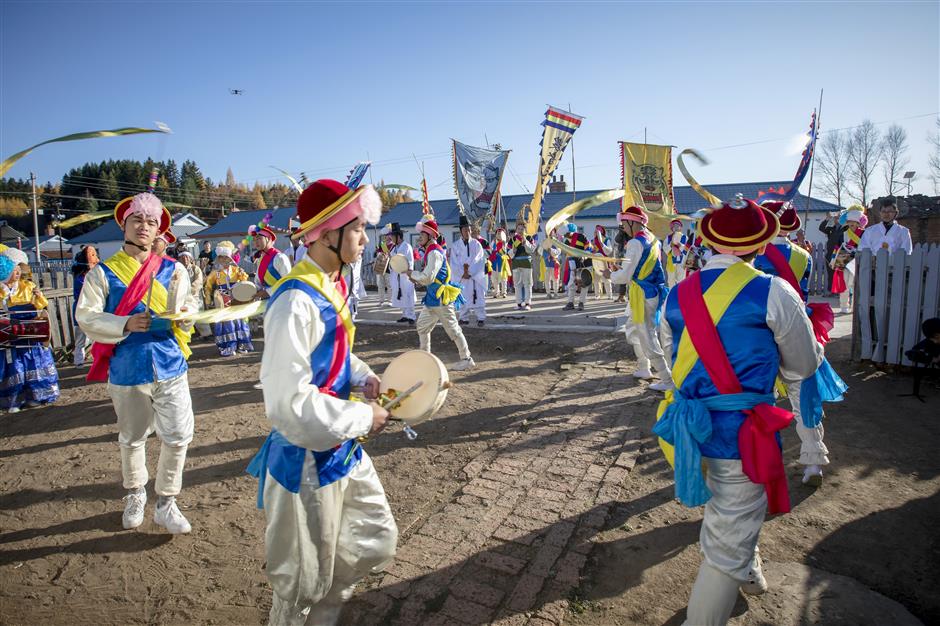
Dancers wear hats with long silk ribbons for the xiangmaowu, or elephant-hat dance.
One of the most recognized parts of the performance is the xiangmaowu, or elephant-hat dance. Dancers wear hats with long silk ribbons, sometimes as long as 32 meters.
As they spin their heads, the ribbons whirl above them in wide circles. In some cases, dancers jump, kneel or even flip to keep the ribbons in motion. The display is both athletic and symbolic, linking the dancer's body to the rhythm of nature.
The dance varies by region. In the east, the style is fast-paced with acrobatics and tambourines. In the southwest, it is slower, with conical hats and paper flowers. Some dancers imitate warriors on horseback or archers, adding elements of local folklore and martial arts.
Choreographers helped adapt the dance for the stage. It became a folk art for festivals and state performances, often shown on TV during the Spring Festival Gala.
The transition helped the dance survive, but new concerns appeared. As younger generations moved to cities and traditional farming declined, fewer people learned the dance.
To protect the form, governments began funding local programs. In Wangqing County, Jilin Province, more than 30 training bases have opened since 2014 to support education and performance.
Today, schools teach children as young as 3 years old. Elderly residents continue to perform during holidays and community events.
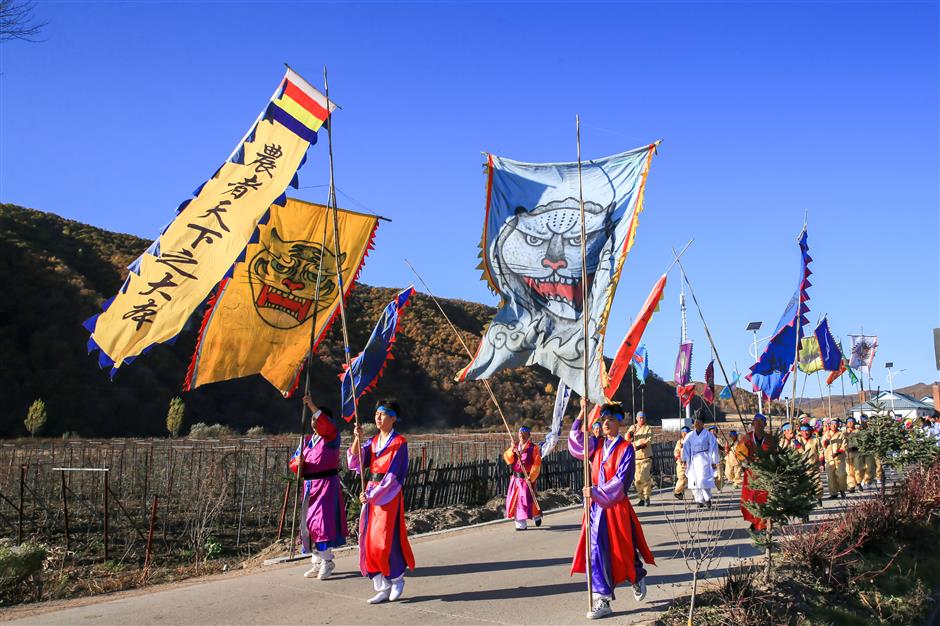
The farmers' dance of the Korean ethnic group originated as a way to honor the earth and seek blessings for a bountiful harvest.
Inheritors like Jin Mingchun and Yin Rongxun play a key role in passing on the tradition.
Jin, 67, once led a team of 1,000 dancers in a world-record performance. He also holds a Guinness World Record for 44 ribbon spins in 30 seconds. He calls the dance "our cultural ID."
Yin, 28, became a county-level inheritor after more than 10 years of training. He said the dance reflects "the good qualities of our group — the ability to sing, dance, work hard and be hospitable."
Yin and others are also leading efforts to update the tradition. In Jilin's Yanbian, dancers have added elements of Chinese opera, rap and hip-hop. The changes aim to draw younger audiences and keep the tradition relevant.
"We adapt so the dance stays alive," Yin told China News Service.
Preserving the dance involves more than movement. At the Yanji Intangible Cultural Heritage Center, students learn to carve masks and make drums.
Since opening to the public in 2021, the Chinese Korean Farmers' Dance Exhibition Hall in Wangqing County has become the only museum in China dedicated to the heritage.
Through displays of historical images, artifacts, life-size models, interactive sand tables and teaching spaces, the museum highlights the development and cultural value of the dance.
Open daily with free admission, it has become a popular cultural attraction and tourism site in Wangqing.
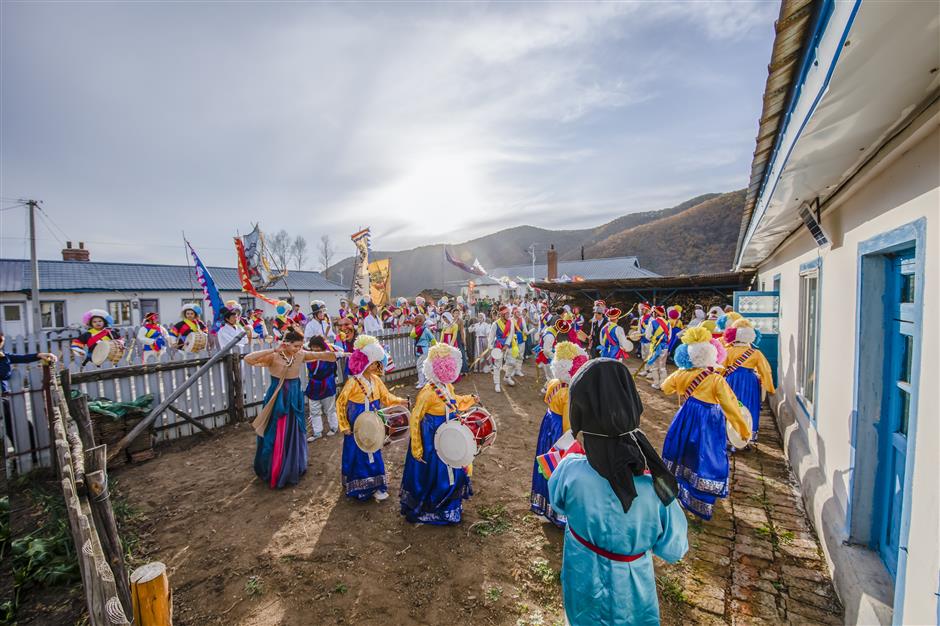
Colorful performances and festive sounds create a joyful scene during the Lunar New Year in northeast China's villages.
Today, the farmers' dance is performed across China and the world. It has appeared in more than 40 countries, including at the 2018 Pyeongchang Winter Olympics in South Korea.
But its most powerful moments still take place in the fields and villages where it began. During traditional festivals such as the Lunar New Year and Mid-Autumn Festival, or even while repairing dikes, community members come together to dance.
UNESCO describes the farmers' dance of China's Korean ethnic group as "the product of accumulated labor and wisdom."
It continues to serve as a living connection between people and the land, between past and present.
In a time of fast change, the farmers' dance remains an important expression of the cultural heritage of China's Korean ethnic group, UNESCO says.

